How much should I pay my developers?
As a payroll software and service company we(Quickchex) often receive compensation benchmarking requests from clients. One of the most sought-after resources in the market right now are developers. Hence, we surveyed and analysed data of thousands of developers and companies to understand salary trends in the Indian developer market today. We have highlighted some of our findings below.

Our findings
Finding 1: Python and Ruby developers attract higher compensation than their .Net or PHP peers
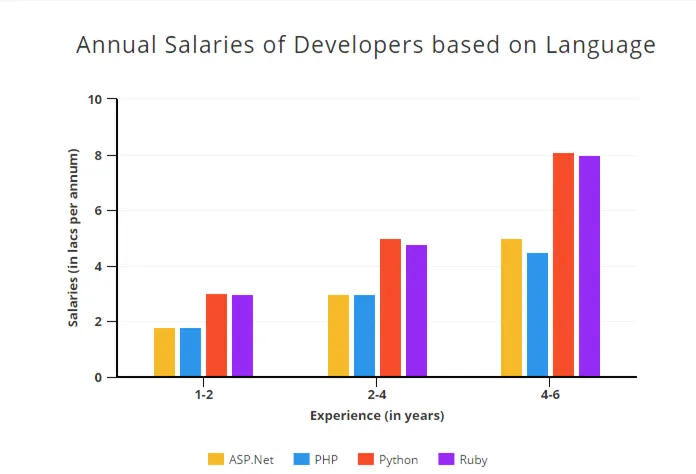
One of the major reasons for the difference in compensation levels is the demand-to-supply ratio of developers. We thought we’d dive a little deeper into this to come up with the analysis to support this theory.
We pulled out data from various job portals and professionals listing websites to compare the demand-to-supply ratio. Here’s what that data looked like:
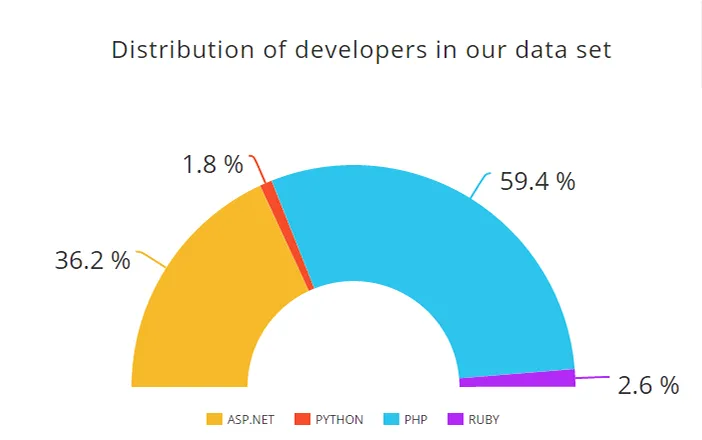
Note that all numbers are rebased to 100, and are meant to be relative to each other and not in absolute terms
From our data set we observed that.Net or PHP developers are clearly more abundant in supply relative to their Ruby or Python peers. This means that it’s much easier to recruit a PHP developer than it is to find a Python or a Ruby Developer, making the latter a scarcer and more coveted resource.
Also, in recent times, programming languages like Ruby and Python have become more popular than the traditional .Net and PHP languages. Modern technology companies are increasingly choosing technology stacks based on Ruby on Rails or Python-Django due to faster development cycles and growing open source communities.
Finding 2: Metro Cities are willing to shell out more for developers
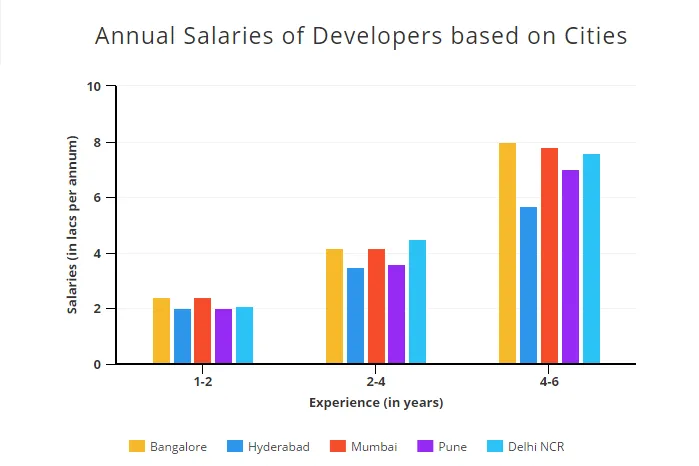
Apart from the cost of living factor that plays a part when you compare metros to non-metros, we wanted to understand if there were other forces at work here. Once again, we turned to the demand-supply analysis to determine if there were any telling contributors to the higher salary payouts in metros.
We decided to analyse how the tech VC funding since 2011 is divided across these cities. We felt that this would be a good proxy indicator of demand for developers in these locations. Then, we stacked them next to the data of job applicants in these cities as an indicator of supply. Here’s what we ended up with:
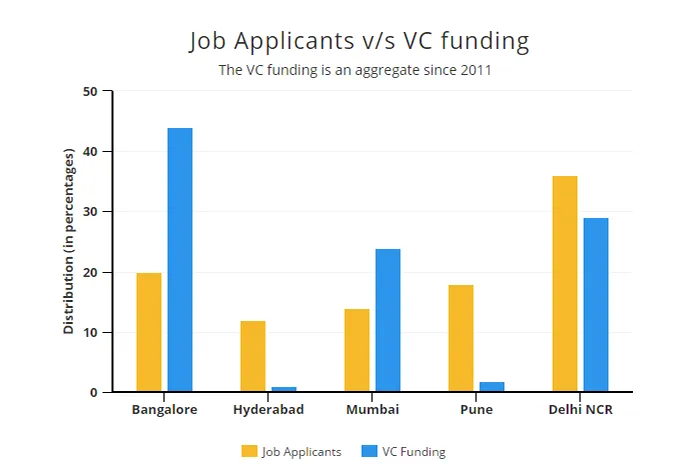
Note that all numbers are rebased to 100, and are meant to be relative to each other and not in absolute terms
In upcoming cities like Pune and Hyderabad, the supply of developers is relatively higher to the demand in the market. On the other hand, markets like Bengaluru and Mumbai do not have as many developers to keep up with the demand coming from the growth of the technology sector, driven in part by the large inflow of VC funding.
Finding 3: iOS developers are paid more than their Android peers
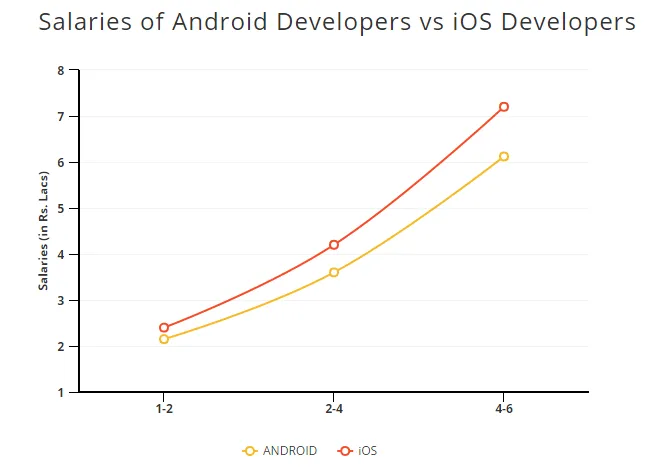
Note that all numbers are rebased to 100, and are meant to be relative to each other and not in absolute terms
iOS developers earn more than their Android counterparts but we also wanted to find out why. We decided to compare the availability of Android developers to that of iOS developers to see if we could gather any clues from there. Here’s what we found out.
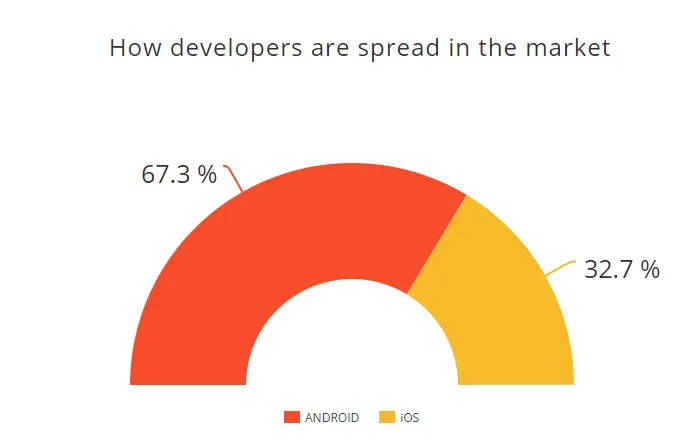
From our data set we deduced that there are twice as many Android developers when compared to iOS developers in the Indian job market, leading to a difference in compensation levels.
Things to note
While our research does point to the clear difference in compensation levels arising because of different technology stacks and geographic locations, there are a number of other factors that determine compensation levels, including educational institutions (Tier 1 Vs Tier 2 Vs other) and type of company (startup vs corporate). Our research serves not to pinpoint absolute compensation levels, but to highlight relative trends in the market.
To conclude
If you are an entrepreneur who is debating what technology stack to use, hopefully our research has given you a degree of insight into supply/demand trends of developers in the market. While languages like Ruby and Python do offer significant advantages in terms of speed of deployment, languages like PHP and .Net do offer a much larger supply of engineers in the market, which has significant recruitment cycle and cost benefits.
If you are an entrepreneur that has already chosen a tech stack, it might make sense to explore upcoming cities like Pune and Hyderabad that offer an opportunity to expand your target talent pool, without breaking the bank.
About the author:
Quikchex is one of India’s leading cloud companies, which integrates HR processes like attendance, leave, and payroll with each other. In addition to this we also provide payroll outsourcing and compliance management solutions. With over 250 clients including some of the leading startups all across the country, we intend to change the way businesses handle their HR.







